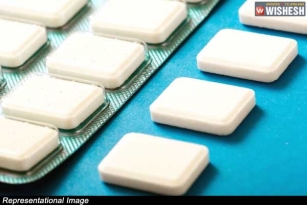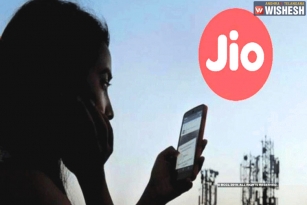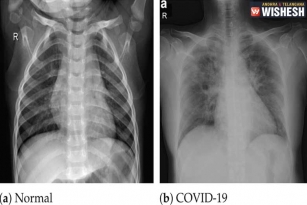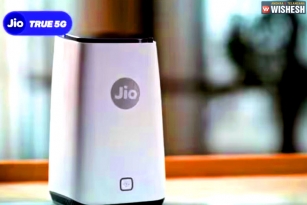Hi-tech overnight lenses that tests blood sugars and give eye drops also
July 01, 2015 20:43
Scientists are now trying to come up with a new range of hi tech contact lenses that can do more than just help you see. This “more” includes stopping your eyesight getting worse checking your blood sugar levels, and even zooming the sight.
Let’s have some hands-on information on this:
Overnight hard contact lenses is a one-stop solution for many of your eye concerns. For children who have short-sightedness, (this causes distant objects to appear blurred while the close objects can be seen clearly), there may be a rather ingenious solution: overnight hard contact lenses, which correct the eyes as the child sleeps so they don’t need glasses or lenses during the day.
Overnight lenses can be worn by adults with short-sightedness, but this is purely to correct vision to avoid glasses the next day and can’t prevent the condition as their eyes are fully formed.
The silicone lenses alter the shape of the eye, a process known as Orthokeratology.
They press on the cornea, the clear part at the front, which becomes misshapen with short-sightedness, reducing its curvature.
And while not a cure, if used while the eye is growing, overnight lenses may prevent or slow down short-sightedness.
‘You wake up with perfect vision, allowing the lenses to be removed during the day.
'The effect is rapid, providing good vision within a few days. With regular use, the effect can last for two to three days without re-applying the lenses.’
Overnight lenses can be used from the age of five (when children are deemed to be ‘responsible’ and won’t take them out). They can stop wearing them once their eyes stop growing.
The overnight lenses, which are usually changed every six months, are available privately from some opticians and cost around £200 to fit and then £40 a month for check-ups and cleaning solutions.
Children may be able to claim an NHS allowance of up to £56.40.
Also the lenses helps protect the eyes from the harmful effects of the sun as UV protection is added to half of soft contact lenses.
The advantage they have over sunglasses is that they protect the whole eye; with sunglasses, UV rays can get around the sides (ideally, you would wear UV blocking contacts with sunglasses).
ACT AS BUILT-IN BINOCULARS
Scientists from Switzerland are developing contacts with a built-in magnification for patients with AMD.
The hard lenses magnify what you see by up to 2.8 times and work in conjunction with ‘smart’ glasses, which are activated by the wearer’s winks.
Wink the right eye to turn on the zoom, wink the left eye and the zoom is deactivated, bringing it back to normal.
‘We think these lenses hold a lot of promise for low vision and age-related macular degeneration,’ says Swiss researcher Eric Tremblay.
Measuring pressure in the eye is a routine part of eye checks for everyone over 40.
This is to check for glaucoma, an often symptomless and potentially blinding condition linked to raised pressure in the eye. It’s caused by a build-up of fluid that damages the optic nerve.
Usually pressure is checked using an air-puff test, where a machine puffs air into the eye and measures the resulting flattening of the eyeball.
However, just like blood pressure, eye pressure can change if the patient is worried in the consultation - known as so-called white coat syndromess.
People who wear contacts are more prone to eye infections than non-wearers. It's thought wearing contact lenses may interfere with the delicate balance of bacteria that live naturally on the eye’s surface
Swiss company Sensimed has devised contact lenses that continuously monitor the pressure at the back of the eye.
The soft lenses, known as Triggerfish, contain a sensor that gathers 288 pressure readings over 24 hours.
It’s thought that continuous monitoring may identify glaucoma patients most at risk of the disease rapidly progressing — these are people with consistently raised pressure or who have dramatic changes in pressure.
As Michael Bowen, director of research at the College of Optometrists, explains: ‘Glaucoma is a leading cause of sight loss and has no symptoms.
‘These lenses could be useful for patients identified as being at high risk of glaucoma, such as those with a family history, because they build up an accurate picture of pressure in the eye.’
ADMINISTER EYE DROPS
Anyone who has ever used eye drops knows that it is virtually impossible to ensure all the drops stay in the eye.
Researchers from the University of California estimate that only 5 per cent of eye drop medication for glaucoma reaches the affected area, so doses prescribed are far greater than needed.
To overcome this, researchers have developed contact lenses embedded with microscopic diamonds loaded with the glaucoma medication timolol maleate.
When the medication comes into contact with an enzyme in tears, this triggers the slow release of the drug into the eye.
Mr Bowen says these lenses could be of great benefit to patients with glaucoma, allergies or eye infections.
‘Eye drops are commonly prescribed, but it can be difficult to know if you’ve taken the right dose because they can spill out of the eye,’ he says.
As anyone who has ever used eye drops knows, it is virtually impossible to ensure all the drops stay in the eye - but some contact lenses can help
Finger-prick tests to check blood sugar (glucose) levels are a daily ritual for many people with diabetes.
Now scientists from Google and Alcon, part of the pharmaceutical company Novartis, are working on a hassle-free method of checking glucose levels with a contact lens that can measure glucose in tears.
It uses a miniaturised glucose sensor - so small it looks like bits of glitter - embedded between two layers of soft lens material and a tiny wireless antenna, thinner than a human hair, which connects remotely to a smart phone or computer.
Researchers are also working on integrating tiny LED lights into the lenses, which could light up to indicate that glucose levels have crossed certain thresholds, indicating the patient should have another dose of insulin.
- Manohar

















